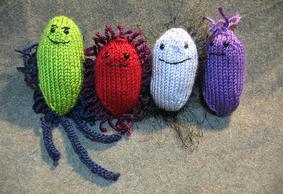Current Research. Microorganisms are the smallest living things on Earth, yet they influence and define life as we know it. Studies (Kembel et al. 2012, Rintala et al., 2008, Tringe et al., 2008) have shown that the microbiome of built  environments is very complex, shaped by the human population that inhabits it, air circulation, building use, design and materials. Most individuals spend about 90% of their time indoors! You are constantly assaulted with either permanent or transient microorganisms from the built environment, which interplay with your own microbiome (Kembel et al., 2012).
environments is very complex, shaped by the human population that inhabits it, air circulation, building use, design and materials. Most individuals spend about 90% of their time indoors! You are constantly assaulted with either permanent or transient microorganisms from the built environment, which interplay with your own microbiome (Kembel et al., 2012).
In my lab currently, we are researching how best to preserve the microbiome under periods of duress. Specifically we are studying fecal matter and its preservation for use in fecal matter transplants (FMTs). Ultimately, we’d like to advance personalized medicine by being able to restore a healthy microbiome in individuals whose microbiome has been disrupted by illness or medical treatments.
Check out this great video on FMTs! video
Other projects we have pursued in my lab include:
- Studying how the microbiome of the built environment changes spatially (e.g., corridors, lobbies, closed rooms) and temporally (i.e., daily, seasonally, annually),
- Studying how microorganisms found in the oral cavity (mouth & teeth) differ between Old Order Amish individuals compared to western non-Amish individuals, and
- Studying how environmental factors and exposures times lead to changes in the skin microbiome.
- A study of how an additional electron donor can change nitrates in soils. This was a collaborative interdisciplinary research project (CISP) with faculty and students in Engineering Department at Elizabethtown College.